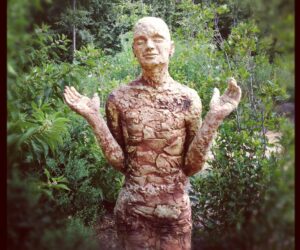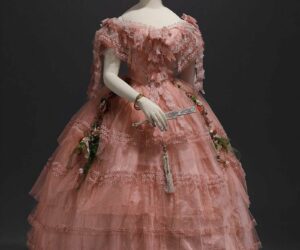(re)writing blind
I’m in the process of a complete rewrite, the most extensive I’ve ever done. It’s true, first novels aren’t the best novels. And my first novel was written three times before I put it away for a while. But it kept pestering me until I realized that the characters, the story, and the plot (if tweaked considerably) were still worth the trouble. The exact trouble is rewriting a 75K exceptionally mediocre story into something around 120K that has a lot more grit and substance.
What I’ve done is written blind. I didn’t even read the last draft, completed some three or four years ago. Oh, it’s still around, and occasionally I’ve had to consult it. But scenes are, by and large, constructed from what I remember. And if I can’t remember? I re-create.
The most amusing side-effect is the similarity some of the passages have, in spite of the fact that I’ve not re-read. Today I was writing one of my favorite scenes, where Peter meets three very important characters, called The Three, in the great hall of Lyos (HELLO epic fantasy!). There are a few bits I actually like about the old version, but all in all I’m happier with the rewrite (though it’s a bit on the long side!).
For your amusement, the scenes are below. The original is in italics.
The doors opened inward, and Peter straightened his tunic again. He wished that Tengel were around to help him know what to say. Nonetheless, he proceeded into the main hall of Lyos, his footsteps echoing against the black marble floor. The hall was even higher than the entrance, structured like a colonnade. There were leaded windows in each bay to the side, and a few statues—mostly carved of wood and painted—as well. At the very end was a dais of sorts, with three great oak chairs carved with ornate designs. Three figures were seated there, facing toward him.
The center figure was the one that took Peter’s attention fully. She was a small, wizened creature, delicate and old beyond reckoning. Her long white hair fell down her shoulders, plaited here and there, and ended by her elbows. Her garb was light blue, which matched her eyes. A pair of wrinkled lips were lengthened in a soft smile. She gestured to a chair set below the dias.
To the woman’s right was an older gentleman, but compared to the center figure, he seemed youthful. His beard was steely gray, black shot with white here and there. Although he was tall, he sat straight, and Peter noticed the man’s large hands with exceptionally long fingers. His skin was swart, as if from frequent travel in the sun, and his eyes large and brown. He had a kind face, and wore a long robe of dark green.
On the other side of the woman was an even younger man who was dressed solely in grey. His coloring reminded him of Harmon—his beard was red-gold and his eyes light grey, though squinted toward him. Unlike the other two, he did not smile. Instead, he regarded Peter intensely. He was very strongly built, and Peter wouldn’t be surprised to find out he was some kind of soldier. His square jaw gave him a handsome if not slightly harsh look.
—
Peter nodded, and Beryl curtsied, bowing her head low so her hair fell across her face for a moment. She did not smile again, but turned and opened the doors that led to the hall.
Immediately, Peter’s eyes were drawn up and up—then further still. Though the beams were not living trees, they had been carved to look so. The wood was lighter than the roofing, a honey-wheat hue, and each limb and branch curled and reached higher than the next. Here and there were glass leaves and birds, affixed to the beams, reflecting the light from the large glass windows, set high above their heads.
Peter had been led from a side door, and he followed Beryl across the smooth tiled floor—tiles so black they gave the appearance of still water—toward the center of the room. Peter was aware of statues poised along the sides of the room, but stopped short when he noticed the three figures sitting in chairs on the dias.
Peter’s eyes were drawn to the the woman in the center; she commanded attention in spite of her remarkably small frame and advanced age. Peter did not think he had ever seen a woman so old, and yet so beautiful. She was perched at the edge of her seat, her tiny hands encircling a cane, her long white hair plaited on each side and spilling far past her waist. The ends were tied with silver thread that reflected the glimmering rings on her hand and the bangles on her sagging ears. She wore a simple white robe, and yet it was a marvel in its plainness and purity. Her face was round and set with deep, dark eyes, and she gazed at Peter with a look of both surprise and amusement. When he caught her eye, she smiled, and her face set with a thousand wrinkles in her fair white skin.
To the woman’s right was a wizened man, though he was far from elderly in comparison to the woman. His beard and hair were the color of steel, both trimmed and straight. His bright green eyes stood out against his dark skin, lined with wrinkles and dark lashes. He wore brown, and was quite tall, but carried no staff or cane. From the way he sat Peter guessed him to be rather fit; his posture was impeccable. Something in the angle of his head and the sharpness of his nose reminded Peter of a bird of prey, however, and he did not smile. He simply turned his heavy-lidded eyes to Peter and raised one brow.
And the third figure Peter saw was familiar in that he bore a striking resemblance to his brother Harmon. In fact, the similarity was such that Peter knew at once they had to be twins. Leofris was slightly sturdier than Harmon, but just as tall. His hair was cropped short, the curls clinging to his brow. He had a small beard, mostly about his chin, and wore a dark red tunic with a brilliant clasp keeping his cloak to his shoulder in the shape of a silver stag. When he saw Peter, Leofris’s mouth fell open ever so slightly, and he was the first to speak.




5 Comments
elizaw
That’s hilarious. 🙂 Though I’m a little surprised that they match up at all, especially given the space between rewrites. My current draft of my novel is my second blind rewrite (three disconnected drafts), and each time the plot reshaped itself.
Natania
@elizaw Yeah! I’m surprised, as well. I mean, the difference is (I hope) rather obvious, from a writing quality standpoint. But a few of the details I suppose are just so vivid that, well, I guess it stayed with me. I even had an encounter earlier with two guards–and I rewrote it nearly verbatim. Same guards, same outfits, virtually same conversation. Weird. I guess I’ve internalized more of it than I thought!
Pingback:
Jenn
The similarities are striking, but I love the details you’ve added to the hall in the re-write. The description of the beams in the hall made to look like trees had my mouth gaping, like when I first read about Lothlorien…just awesome.
Mari Adkins
The exact trouble is rewriting a 75K exceptionally mediocre story into something around 120K that has a lot more grit and substance.
I went the opposite direction. From a manuscript started in 1996 and “finished” in 2004. Two editing cycles between 2004 and 2007. Last Fall I decided I couldn’t give up on it and gave it the most thorough overhaul I’ve ever given anything. And I went from a 122k manuscript to an 87k manuscript. :phew: I took out a ton of garbage that just had no place in the story and/or did nothing for the story. I also completely rewrote the beginning and the ending — and highly spit-and-polished the middle. I have a much better manuscript and fuller, more complete story now.
Did I send you the PDF? Am always happy to share. It’s sitting at MacMillan New Writers currently. If I don’t hear anything by August 27th, I get to ship it on to someone else.
But scenes are, by and large, constructed from what I remember. And if I can’t remember? I re-create.
I thought about doing that. The thought made me sick to my stomach, so I just didn’t. But then I got brave and chopped off the first eight chapters and wrote a completely different opening. Then I chopped off the last chapter and wrote a completely different ending. Go figure, right?
The most amusing side-effect is the similarity some of the passages have, in spite of the fact that I’ve not re-read
That’s awesome. 🙂